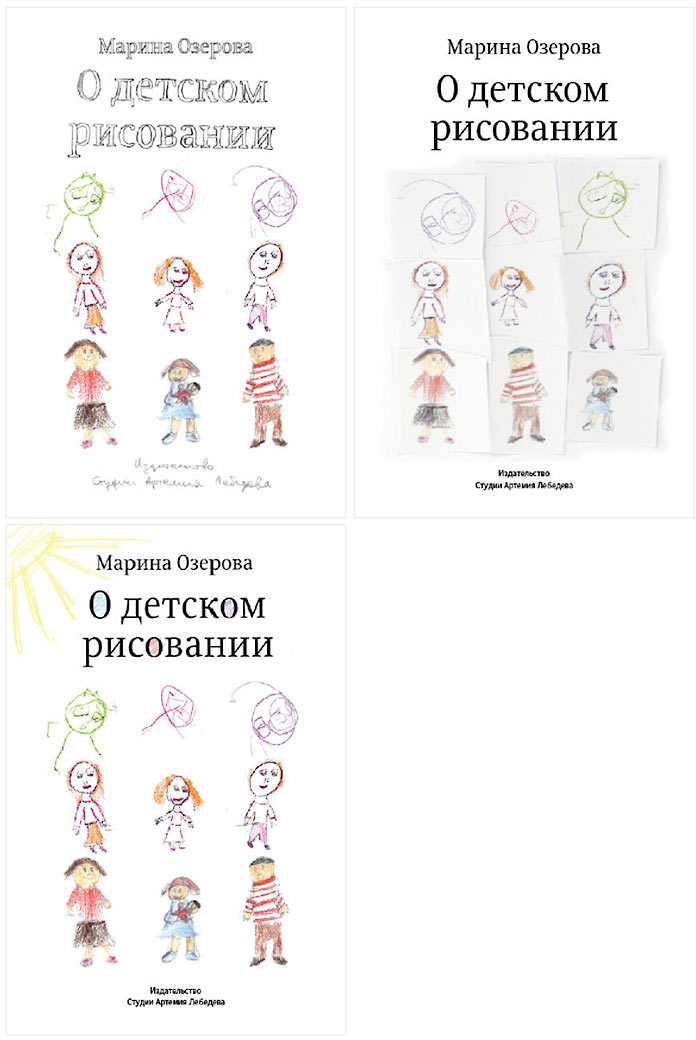The making of On Children’s Drawings by Marina Ozerova
In 2009, the studio gets a hold of an interesting book manuscript. The editorial staff agrees that inconsistencies in content and low readability of text is overshadowed by the incredible number of interesting facts, observations, and conclusions. But most importantly—by the practical value of the book, which was written by the author as a follow-up to training workshops for parents. Another attractive point is the author’s relatively uncommon stance on children’s drawings; respectful, considerate, and thoughtful. And the kids’ doodles too, of course.
The book is sent for editing, during which the author and the editor continually go back to finished chapters, adding, reducing, changing, and re-writing the text. The book loses some of the extensive and rather superficial paragraphs on psychology, and becomes more advisory in tone and content. It then becomes more of a guide for caring parents who may not be very experienced at drawing, but who, perhaps, without truly understanding how and why their children draw, instinctively realize that their drawings are not just silly scribbles—and drawing on the walls is not a mortal sin. This book, written for such concerned adults, serves as a fairly short, but clearly written, and diverse exploration into the heart of the matter, providing lots of useful information and ideas for collaborating in creative activities with children as well. The book is built around this friendly and educational concept.
Changes to the text are still being made, even during typesetting. The decision must be made to finally stop the process. Otherwise, the book might never get published, since the author continues to conduct new workshops and produce new material.
Along with author’s manuscript we receive children’s drawings, sorted by chapters of the book. We scan them. Then after receiving the edited text we proceed to typesetting.
Thinking over half-titles and selecting title names.
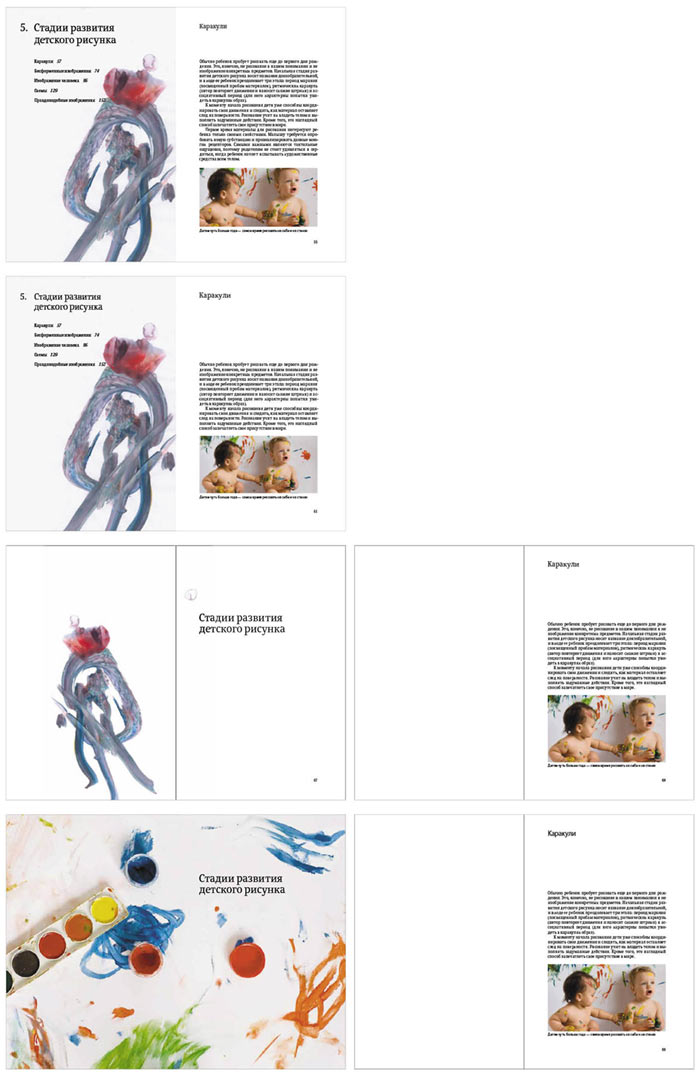
Deciding to handwrite the section titles. Trying to simulate a child’s writing by using the left hand. Not quite there.
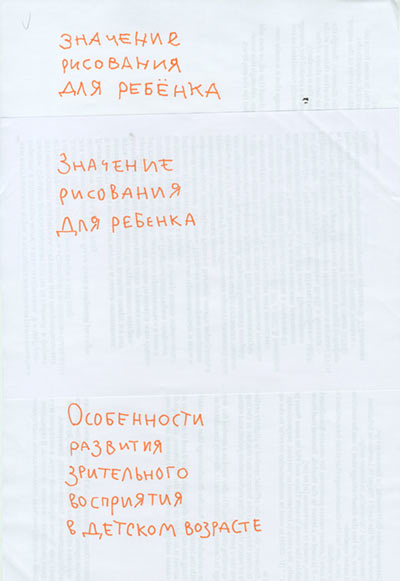
Asking a child for help. He happily agrees to write our chapter names (with errors). First, we wanted to leave it as-is, but then decided to correct the errors, keeping the original “mirrored” letters.
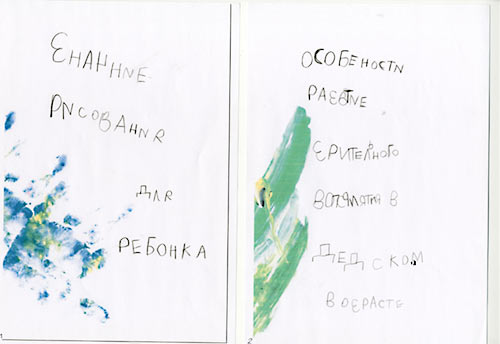
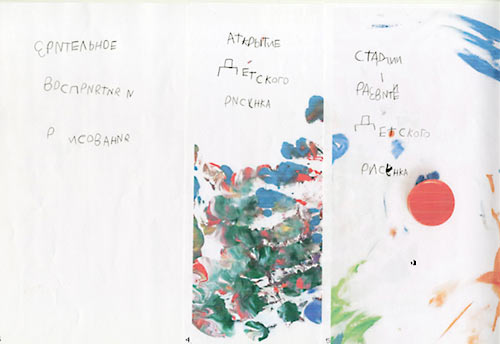
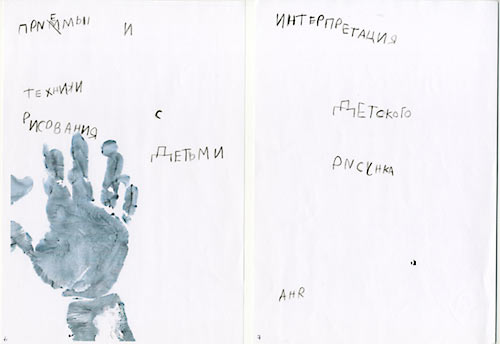
In order to make better and more detailed book illustrations, we photographed kids while they were drawing—the models were the children of our studio employees. Placing photographs at the beginning of each chapter. Looks better.
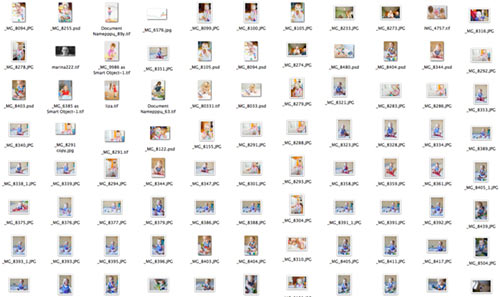
Trying to make it look like some naughty kids got a hold of the book. Placing some drawings on top of the text, but later abandoning this idea.
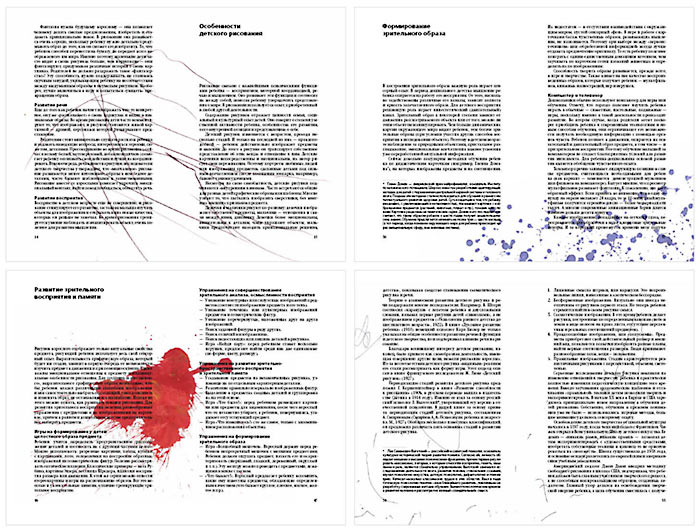
Sorting out the layout of illustrations. First, trying to keep the background, in order to show how the drawing is placed on the sheet of paper relative to its edges. Then deciding that this approach should only be used in cases where positioning of the drawings is significant. In other cases, removing the background.
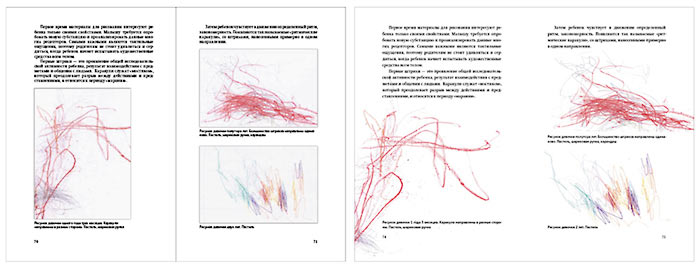
The book is typeset and sent to be checked by the proofreader. But after taking another look, the art director decides that line spacing is a bit small. Typesetting everything and proofreading it again.
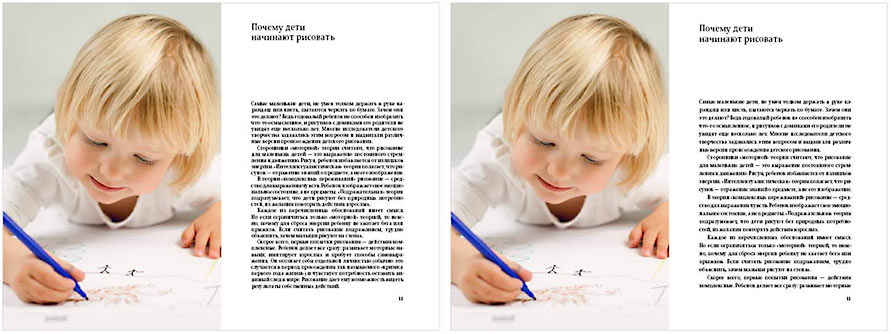
Coming up with the endpapers.
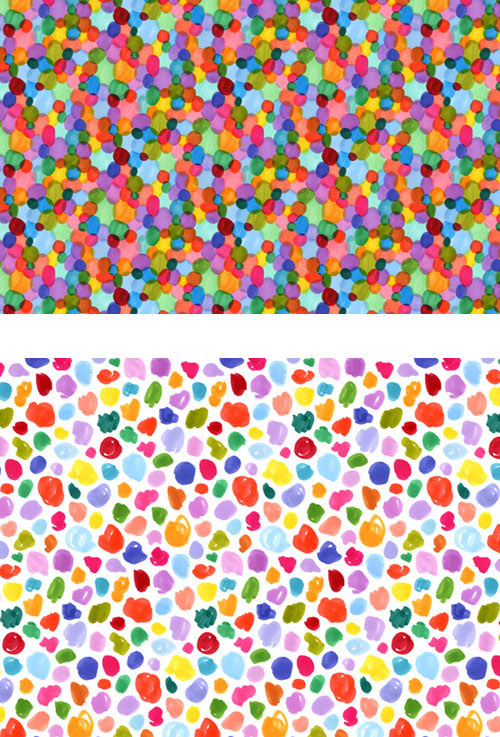
Deciding to illustrate the dust jacket with pictures that show the evolution of children’s drawings.
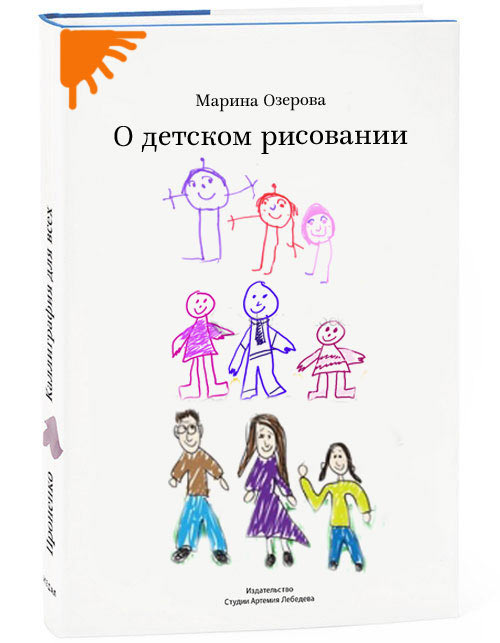
Asking children of different ages to draw a family, then picking the most appropriate pictures.
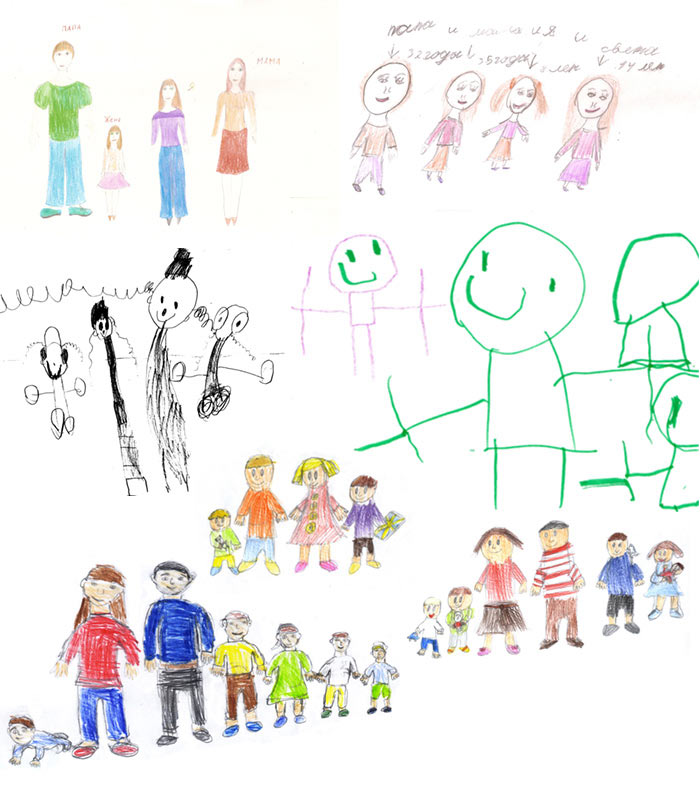
Putting them on the cover, then selecting the best combination.
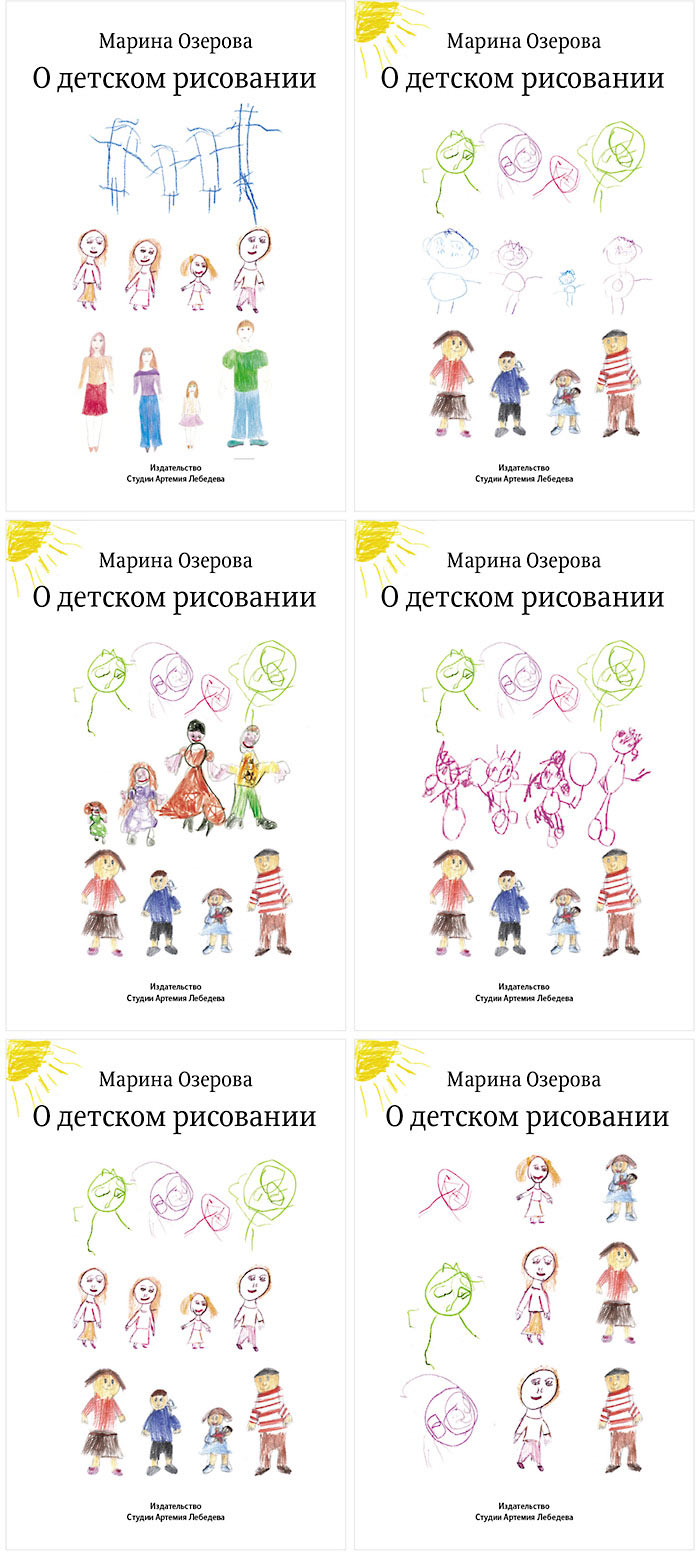
Simultaneously trying out some other options. Art director does not approve.

Going back to the original idea with evolution and improving it.
